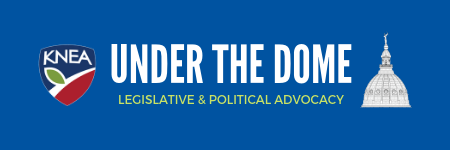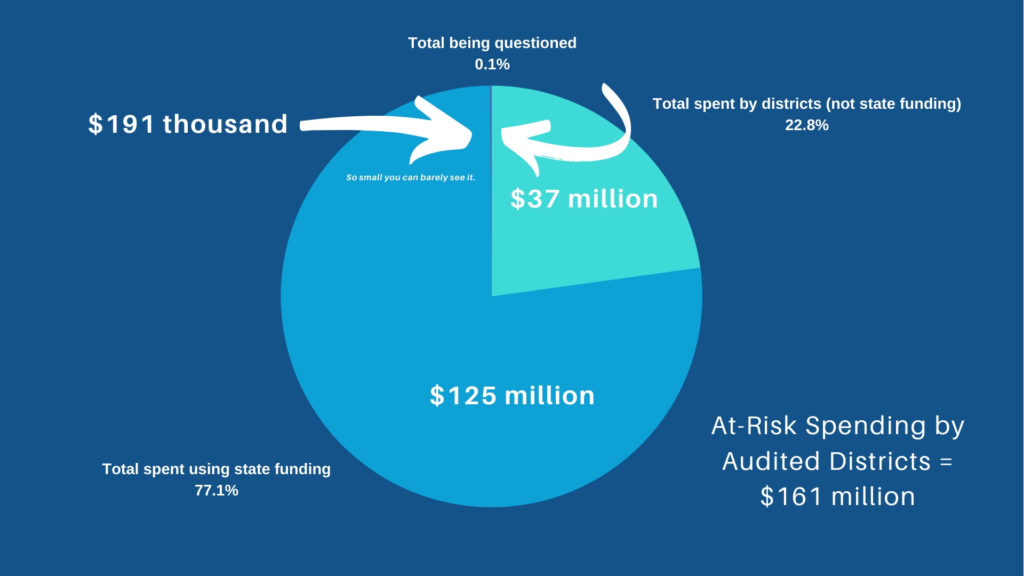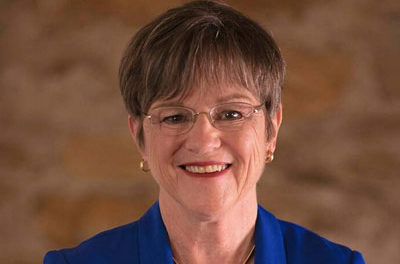Should we re-segregate our schools?
That seems to be the recommendation coming from some conservatives in the Kansas Legislature and some in the media who seem to be buying it.
You see, they are alarmed that students who are not identified as “at-risk” might glean some benefit from money being spent to support those students who are so identified.
A new audit of at-risk spending in 20 Kansas school districts (see graphic above) noted that “Most of the at-risk funding we reviewed was spent on teachers and programs that serve all students rather than focusing on at-risk students.” This is precisely because we do not isolate or segregate at-risk students from their peers. Every classroom in Kansas has at-risk students; some more than others. If we were to ensure that at-risk funds benefited only at-risk students, such students would need to be isolated from their peers. This is not only morally wrong, but it is also a highly inefficient use of resources and would end up costing more than is being spent today.
And, by the way, segregation in our schools was ended according to the law as a result of a federal court case that began in Kansas known as Brown v Board of Education. Once upon a time, we segregated special education students. That ended in the 1970’s with the passage of the federal special education law now known as the Individuals with Disabilities Education Act, or IDEA. Special education inclusion today means that non-disabled children actually benefit from special education funds spent in their general education classrooms. It was not very many years ago when Title 1 funds were tightly restricted to students specifically identified as “Title 1.” Teachers used to have to keep records of which students were identified as Title 1 so they could be sure to comply with rules and policies stating that only Title 1 students benefited from materials bought with Title 1 funds or had the help of a para-professional paid with Title 1 funds. Thank goodness those days are over. Only people who don’t understand the reality of a 21st century classroom – a classroom built around inclusiveness and mutual support – would advocate for segregation and isolation.
Conservative Kristey Williams (R-Augusta) blasted schools, noting that despite spending on at-risk programs, the achievement gap is still near the 25% mark it was years ago. Yes, schools do get at-risk money but it is not lost on those who actually pay attention that once conservatives got their friend Sam Brownback into the Governor’s mansion, school funding was gutted, the constitutional school finance formula was repealed including funding for at-risk students, and the Kansas Supreme Court ruled that our schools were funded in a manner that was both inadequate and inequitable. It wasn’t until April 2019 that the legislature finally complied with the high court and appropriated an adequate and equitable level of funding to our schools and our students have only enjoyed full constitutional funding for the first half of this school year. And it should not be lost on anyone that Williams voted against the school funding bill.
We’ll have more on this topic in upcoming editions of Under the Dome when we talk about at-risk expenditures and how they meet the needs of our students.




